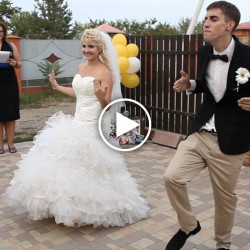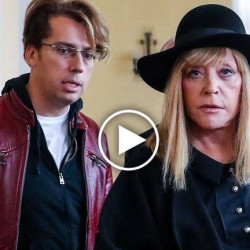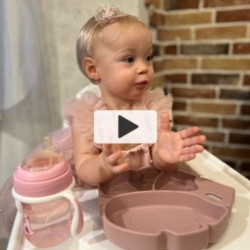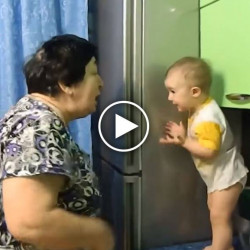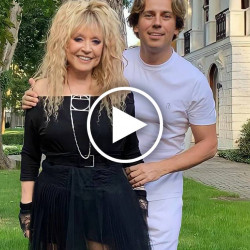When I’m Mean to Myself, I Think of My Teenage Daughter
If you purchase an independently reviewed product or service through a link on our website, SheKnows may receive an affiliate commission.
We stood in front of the mirror together, side-by-side, my 14-year-old daughter and me. We were both dressed up at the time for a special occasion — makeup, hair, fancy ‘fit, the whole thing.
Everyone always says we look alike, but I don’t see it. She is so effortlessly beautiful — blue eyes and locks of curly hair. My hair is straight and my eyes are brown. Her youth and vibrancy are a time-traveling mirror to my 45-year-old skin and patches of gray at my scalp.
“Look at us!” she exclaimed. “We look so good.” (Then, of course, she snapped a selfie and skipped happily out of the room.)
Meanwhile, I closed my eyes and captured that moment in my mind. “Gosh, she’s beautiful,” I whispered to myself.
I didn’t say the same about myself though. Instead, I zoned in on the wrinkles around my eyes, the loose skin on my neck, the tightness around my waist where my pants were too snug.
Because that’s how it goes, doesn’t it? I was once an energetic teenage girl with dewy skin and a tiny waist, but now I’m a middle-aged mom — 30 years into the future. And today’s “me” struggles to find the natural beauty and value in myself that I so easily see in my child.
But just as she is a mirror to my past, I am a crystal ball to her future. And I’ve come to realize one reason why it is so important that I express kindness — love, even — to myself, to my body. The truth is, I want her to absolutely love and cherish herself today, but I also want her to love and cherish herself when she’s 45, like me.
When I berate myself for literally aging or because my body has changed and no longer looks like it did 10, 20 years ago, I think of her. I think of her insulting herself someday too. Of hating what she sees in the mirror. And my heart shatters at the mere thought of it.
Perimenopause has been a real kick in the teeth for me, like it is for women everywhere. My body has morphed — abruptly, it seems — into a body I don’t recognize some days. And it would probably be easier to just accept defeat, hate it, and never attempt any positivity or appreciation for it ever again.
But I’ve decided that no, I’m not waving the white flag. This body that stuck with me through my innocent girlhood when I rode bikes and climbed trees, this body that survived the hellscape of middle school and then high school, this body that carried me through college while I studied abroad in England on my own at 20 years old, this body that was there when I fell in love, got married in a big, white satin dress, and then brought three brand-new humans into the world … I’m not giving up on it just because it’s changed. Just because it’s bigger and older. Just because my skin is saggier in some parts and my hair gets grayer by the day.
So many of us have adolescent girls standing alongside us in the mirror as we hit perimenopause, which makes sense, as the average age for childbirth is late 20s or early 30s. I’m 45 and my daughter is 14, which means we’re both experiencing monumental physical changes at the same time.
And because we already endured the toxic diet culture messaging of the ’90s, we know how important it is that we instill a sense of self-worth in our girls when they are young. But what about when they aren’t young anymore, like us? How do we ensure that they are also protected from the toxic messaging of the anti-aging beauty and diet culture that will undoubtedly attack them when they’re grown women?
We can’t. We can’t shield our girls and their future selves from the billion-dollar industries that thrive on us all hating what we see in the mirror.
But we can model for them what it looks like to appreciate our bodies. We can show them what it looks like to find self-worth in ways that are unrelated to weight, clothing size, or wrinkles on our skin. We can remind ourselves that aging means we’re here. We’re alive. We get to cheer our girls on as they round the bases at their softball games and take them shopping for Homecoming dresses, sharing in their joy as they twirl in the mirror. We get to dance with our partners in the kitchen and have a glass of wine with our girlfriends and laugh until our faces hurt.
We can appreciate and find gratitude in living a life worth living, even — and especially if — that means we look our age. And in doing so, we pave the way for our girls to grow up with the same mindset. We need to do the work now so that when they’re standing next to their daughters and looking in the mirror 30 years from now, they’ll both say together, “Look at us! We look so good.” And they’ll mean it.
I’m still a work in progress, but I’m not giving up. When I catch myself appreciating my daughter’s beauty and not my own, I stop myself and say, “No, we’re not doing that. We’re both beautiful, strong, and worthy — at 14, 45, and we will be when we’re 100.” Because it’s true. And the more we say it, the more we’ll both believe it.
Karen Johnson’s book What Do I Want to Be When They Grow Up? (And Other Thoughts from a 40-Something Mom) is available for pre-order today via Amazon, Barnes & Noble, Bookshop, and Target.

